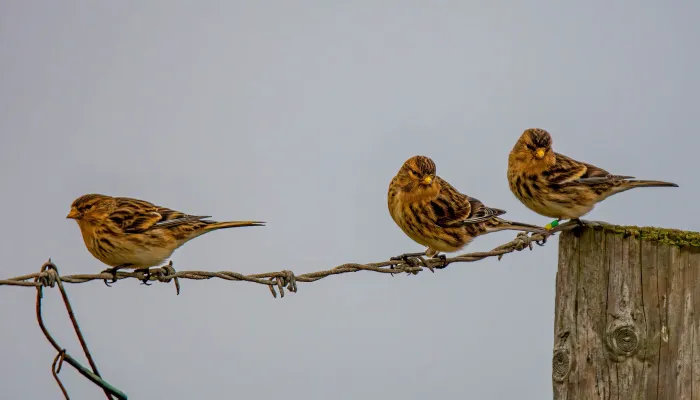| Statistics | |
|---|---|
| Length: | 14cm |
| Wingspan: | 23cm |
| Weight: | 16g |
| Average Lifespan: | 3-5 years |
This small finch nests on moorlands and coastal crofts, spending the winter on the coast. The UK population has declined dramatically.
About
Twite are small finches that feed on seeds. They nest on moorland, but in Northern Ireland and Scotland will also use coastal sites, where they favour crofts. They need cover in which to build their nest, as well as plenty of wildflowers to provide the seeds they eat and feed to their young. The UK's twite population has declined dramatically in recent decades, particularly in England where they're on the brink of extinction as a breeding bird. In winter, numbers are boosted by migrants from continental Europe. Twite often spend the winter on coastal saltmarshes, where they form flocks and sometimes join groups of linnets.
How to identify
Twite are small finches, about the size and shape of a linnet. They have a very short, stubby beak. They're brown on the back with darker streaking, and paler buff-white on the belly with more streaking on the breast and flanks. In summer their beak is grey, but it turns yellow for the winter. Their face and upper breast also become a richer orange-brown in winter. Males can be identified by their pink rump.
Did you know?
The twite's name comes from its distinctive call, a nasal, rising 'twi-eet'. They're also sometimes known as the linnet of the north.

